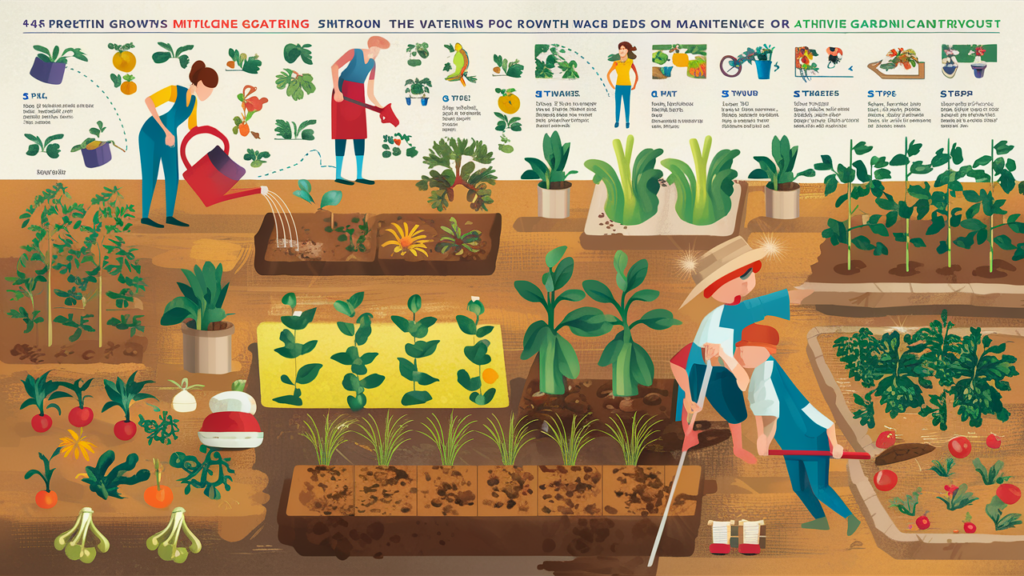
Introduction of Garden Design
Transform your outdoor space into a beautiful oasis with expert garden design tips. Discover creative ideas and practical advice to enhance your garden’s appeal.
Have you ever looked at your outdoor space and felt like it could use a little sprucing up? Whether it’s a small patio or a sprawling backyard, a kitchen garden might just be the perfect addition to bring life and color to your outdoor area. Not only does it add beauty, but it gives you the satisfaction of growing your own herbs, vegetables, and. Let’s dive into how you can transform your outdoor space with a beautiful, functional garden design!
Planning Your Kitchen Garden Design Layout

Before you start digging, it’s crucial to plan. Here’s how you can lay the foundation for a thriving kitchen garden:
Choose the Right Location for Garden Design
- Look for a spot that gets at least 6 hours of sunlight daily.
- Make sure the area drains well and doesn’t collect standing water.
Decide on the Garden Design Style
- Raised Beds: Great for backyards; they help with soil compaction and drainage.
- Container Gardening: Container gardening is great for small spaces like balconies or patios.
Sketch Your Plan
- Draw a simple map of your garden, placing taller plants at the back and shorter ones in front.
- Include pathways for easy access to all plants.
Selecting Plants for Your Kitchen Garden Design

Picking the right plants is not only about what you want to eat but also about ensuring they can thrive in your local climate.
Vegetables and Herbs
- Start with easy-to-grow herbs like basil, cilantro, or mint.
- Opt for vegetables that yield produce over a long period such as tomatoes, peppers, and greens.
Companion Planting
- Plant marigolds to deter pests naturally.
- Grow basil near your tomatoes for enhanced growth and flavor.
Soil and Fertilization Tips for Garden Design

Healthy soil is the backbone of any garden. Here’s how to ensure your kitchen garden has the nutrient-rich foundation it needs:
Test Your Soil
- Check the soil pH and nutrient levels to tailor your soil amendments.
Choose the Right Fertilizer
- Use organic fertilizers like compost or manure to enrich your soil.
- Consider a slow-release fertilizer that feeds plants over time.
Watering and Maintenance Strategies

Consistency is key in the care of your kitchen garden.
Irrigation Techniques
- Drip irrigation saves water by delivering moisture directly to the roots where it’s needed most.
- Water in the early morning to reduce evaporation.
Regular Maintenance
- Spread mulch around your plants to keep the soil moist and reduce weeds.
- Water your plants early in the morning to cut down on evaporation.
Enjoying the Fruits of Your Labor

The true joy of a kitchen science is in the harvest. Here’s how to make the most of your garden produce:
Harvesting Tips
- Pick vegetables and herbs early in the and, when the essential oils are strongest.
- Regular harvesting encourages more production.
Using Your Produce
- Incorporate fresh herbs and vegetables into your cooking for nutritious, flavor-packed meals.
- Store extra produce by canning, freezing, or drying it.
Conclusion
Starting a kitchen garden might seem like a lot of work, but it’s incredibly rewarding. Not only do you get to enjoy fresh, healthy produce, but you also transform your outdoor space into a vibrant area of natural beauty. So, why wait? Grab those gardening tools, and let’s turn that dream garden into a reality!
Remember, every plant you sow brings you one step closer to a greener, more sustainable lifestyle. Enjoy the journey and the delicious rewards it brings!
Better Homes & Gardens: Garden Design Ideas
The Spruce: Backyard Landscaping Ideas
Garden Design: How to Plan Your Garden
HGTV: Beautiful Garden Design Inspiration
Royal Horticultural Society Garden Design

